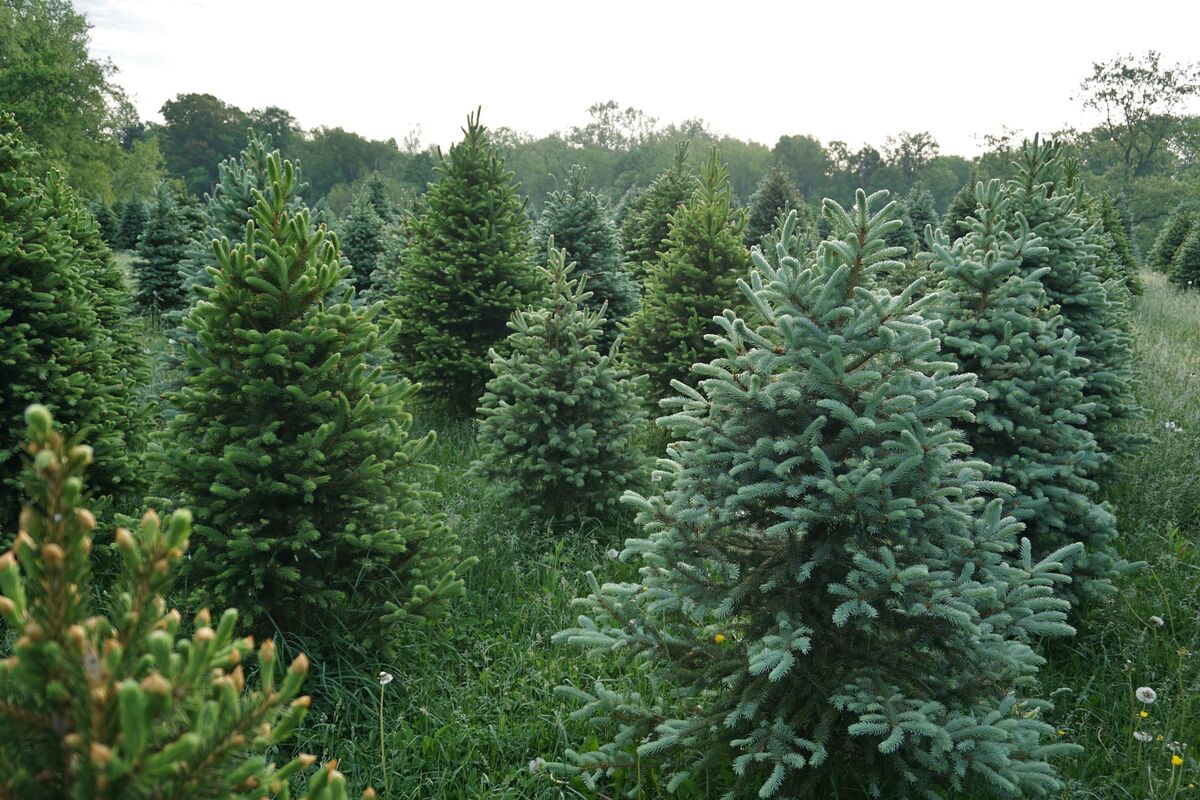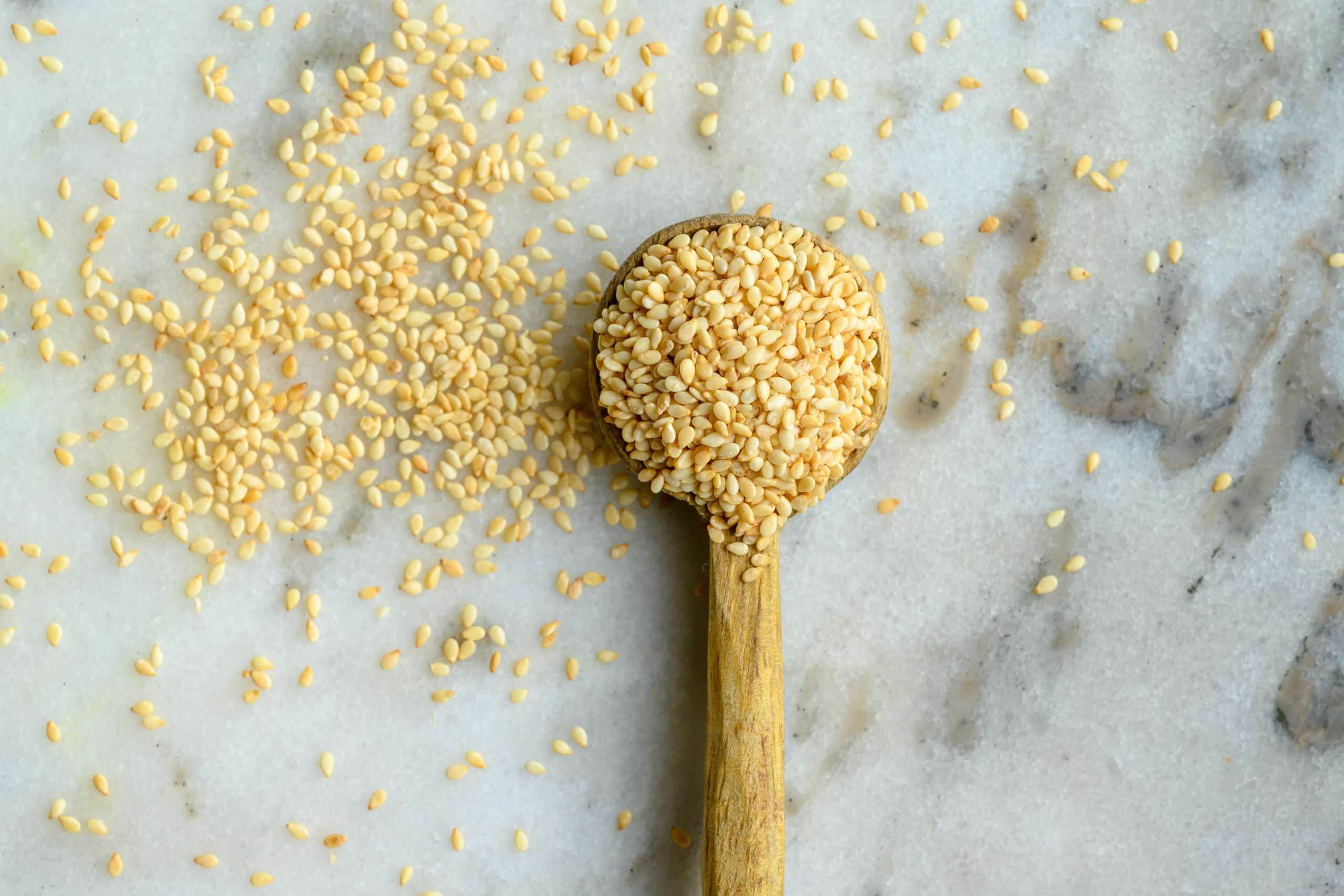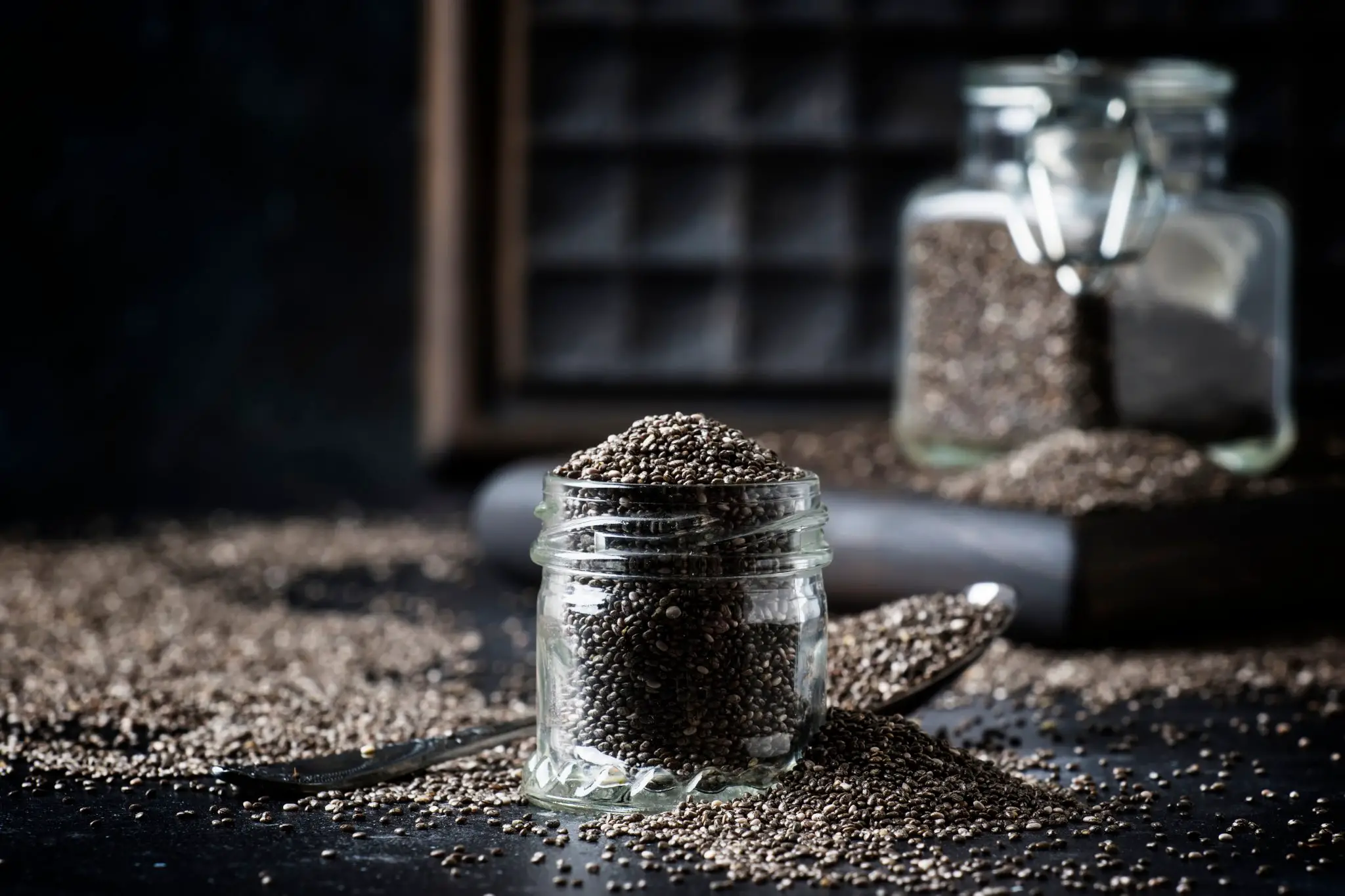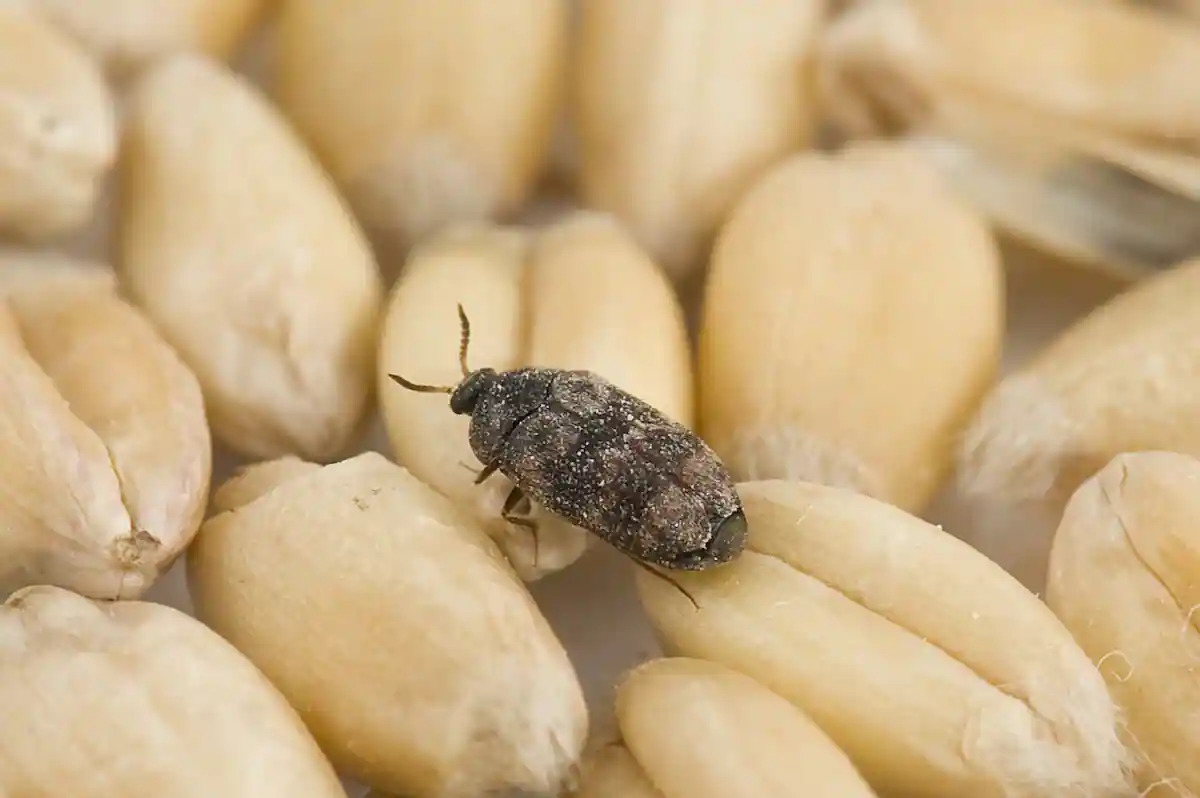Home>Gardening News and Trends>Latest News>Where Are Stick Insects From


Latest News
Where Are Stick Insects From
Modified: January 22, 2024
Discover the latest news about the origin and habitat of stick insects. Unveil the secrets of where stick insects come from and their fascinating natural environments.
(Many of the links in this article redirect to a specific reviewed product. Your purchase of these products through affiliate links helps to generate commission for Chicagolandgardening.com, at no extra cost. Learn more)
Table of Contents
Introduction
When it comes to fascinating creatures, stick insects never fail to capture our attention. These remarkable insects, also known as phasmids, belong to the order Phasmatodea and are famous for their incredible camouflage and unique body structure. With their elongated bodies and leaf-like appearance, they have mastered the art of blending into their surroundings, making them incredibly difficult to spot.
Stick insects have a long evolutionary history that dates back millions of years. Their origins can be traced back to the ancient supercontinent of Gondwana, which included parts of present-day South America, Africa, India, Australia, and Antarctica. As the continents drifted apart, stick insects diversified and evolved into numerous species with adaptations suitable for their respective habitats.
One of the most intriguing aspects of stick insects is their incredible diversity. There are over 3,000 known species of stick insects, and scientists believe that there are many more undiscovered species waiting to be found. They vary in size, coloration, and shape, reflecting the diverse environments they inhabit. From tiny, twig-like species to larger, more robust ones, there is an astonishing array of stick insects to be found across the globe.
Stick insects can be found in various geographical regions, ranging from tropical rainforests to dry deserts. They have successfully colonized almost every continent, including North America, South America, Europe, Africa, Asia, and Australia. Each region has its own unique set of stick insect species, adapted to the specific climate and vegetation of their habitat.
These incredible creatures have evolved numerous adaptations that help them survive in their respective environments. Their incredible camouflage, which mimics plants or sticks, allows them to blend seamlessly with their surroundings and evade detection by predators. Additionally, stick insects have the remarkable ability to regenerate lost limbs, a valuable defense mechanism.
Stick insects reproduce in a unique and fascinating way. Females are usually larger than males and have the ability to reproduce parthenogenetically, meaning they can lay viable eggs without mating with a male. This ability ensures the continuation of the species even when males are scarce or absent. The life cycle of stick insects involves several stages, including eggs, nymphs, and adult stages, each presenting its own challenges and adaptations.
Despite their remarkable adaptations, stick insects face numerous threats, mainly from habitat loss due to deforestation and urbanization. Climate change also poses a significant threat as it alters the habitats these insects rely on. Conservation efforts are crucial to protect the diverse range of stick insect species and ensure their survival for future generations to enjoy.
In this article, we will explore the fascinating world of stick insects, their origins, diversity, habitats, adaptations, and the challenges they face. Join us on this journey of discovery as we delve into the captivating world of these incredible insects.
Evolution of Stick Insects
The evolution of stick insects has been a remarkable journey that spans millions of years. These fascinating insects have adapted and diversified over time to occupy various habitats across the globe.
Stick insects belong to the order Phasmatodea, which first appeared in the fossil record during the early Jurassic period, approximately 200 million years ago. Fossil evidence suggests that stick insects originated in the ancient supercontinent of Gondwana, which later fragmented into the continents we know today.
As the continents separated, stick insects underwent a process of divergent evolution, with each population adapting to the unique environments of their new habitats. This led to the development of various species with different physical characteristics and adaptations.
One of the most intriguing aspects of stick insect evolution is their remarkable camouflage. Stick insects have evolved to resemble twigs, branches, or leaves, depending on their habitat. This incredible mimicry allows them to blend seamlessly into their surroundings, providing them with a crucial defense against predators.
Over time, stick insects evolved to have elongated bodies, slender legs, and a flattened appearance, all of which contribute to their remarkable resemblance to sticks. Some species even have leaf-like extensions on their bodies, further enhancing their camouflage.
The unique body structure of stick insects also serves as a valuable adaptation for their mode of locomotion. With their long legs and agile bodies, they can maneuver and navigate through dense vegetation with ease.
Stick insects have also developed a fascinating defense mechanism known as autotomy. When threatened by predators, some species can willingly shed or detach their limbs as a distraction, allowing them to escape and regenerate the lost limb later. This incredible adaptation enhances their chances of survival in the face of predation.
Through millions of years of evolution, stick insects have become highly specialized for their specific habitats. Some species inhabit tropical rainforests, while others thrive in drier environments such as deserts or grasslands. This remarkable adaptability has allowed stick insects to colonize almost every continent on Earth.
When it comes to reproductive strategies, stick insects exhibit a remarkable diversity. While most stick insect species rely on sexual reproduction, some females have developed the ability to reproduce parthenogenetically, without the need for fertilization by a male. This adaptability ensures the survival and propagation of the species, even when males are scarce or absent.
In summary, the evolution of stick insects is a testament to their incredible adaptability and resilience. From their origins in the ancient supercontinent of Gondwana to their diverse array of habitats and unique adaptations, these insects have successfully carved a niche for themselves in the natural world.
Diversity of Stick Insects
Stick insects, also known as phasmids, exhibit a remarkable diversity in terms of size, coloration, and shape. With over 3,000 known species and many more yet to be discovered, they have successfully adapted to a wide range of habitats across the globe.
One of the most noticeable aspects of stick insect diversity is their size. They vary from tiny species measuring just a few millimeters in length to larger ones that can reach up to 30 centimeters or more. The size of stick insects is often correlated with their habitat and feeding preferences. Smaller species are typically found in tropical rainforests, while larger species tend to inhabit drier environments such as deserts or grasslands.
Stick insects also come in a multitude of colors, ranging from green, brown, and gray to more vibrant hues such as red or yellow. The coloration of stick insects is another adaptation that helps them blend into their surroundings. Species living in leafy environments often have green coloration, while species inhabiting bark-covered habitats may have a more brown or gray appearance.
In addition to size and color, stick insects also display a wide range of body shapes and structures. Some species have long, slender bodies resembling twigs, while others may be stout and heavily built. They have evolved specialized limbs and appendages that allow them to mimic their surroundings even more effectively. Some species have leaf-like extensions on their bodies, while others have spiny protrusions to mimic thorns or branches.
The variation in body shape and structure is not limited to the adult stage. Stick insects undergo a series of molts as they grow, transitioning through different nymphal stages before reaching adulthood. Each nymphal stage may have distinct characteristics, providing additional camouflage and protection.
Geographical location plays a significant role in the diversity of stick insects. Different continents, countries, and even specific regions within a country can house unique species found nowhere else. For example, in Australia, the famous “Giant Goliath Stick Insect” (Eurycnema goliath) is known for its massive size, while in Southeast Asia, the “Walking Stick Insect” (Phartherosoma prometheus) stands out with its fascinating body structure.
The incredible diversity of stick insects presents a strong case for their successful adaptation to various habitats and ecological niches. Each species has evolved its own set of characteristics, allowing them to thrive in specific environments. By understanding and appreciating the immense variety among stick insects, we gain insights into the remarkable adaptability of these fascinating creatures.
Geography and Habitat
Stick insects can be found in diverse geographical regions across the world. From the lush rainforests of South America to the arid deserts of Australia, these remarkable creatures have successfully adapted to a wide range of habitats.
In terms of their distribution, stick insects are found on almost every continent. They are particularly abundant in tropical and subtropical regions due to the favorable climate and abundant vegetation. Countries such as Australia, Malaysia, Papua New Guinea, and Costa Rica are known for their high diversity of stick insect species.
Rainforests are one of the primary habitats for stick insects. These dense and humid forests provide an ideal environment for these creatures to thrive. With their specialized camouflage, stick insects can seamlessly blend into the foliage, making them nearly undetectable to predators. Moreover, the vast array of vegetation in rainforests offers a wide range of food sources for different species of stick insects.
Grasslands and deciduous forests are also home to a variety of stick insect species. These habitats provide a different set of challenges and adaptations for stick insects. In grasslands, where vegetation is shorter and more open, stick insects may rely on their slender bodies and intricate body structures to mimic blades of grass or dried leaves, enabling them to hide in plain sight from both predators and prey.
Deserts and arid regions pose unique challenges for stick insects. With limited vegetation and harsh environmental conditions, stick insects in these habitats have developed specific adaptations to survive. Some species have evolved to have a lighter coloration to blend with the sandy or rocky landscapes, while others have elongated bodies that resemble dead branches or twigs.
Stick insects can also be found in temperate regions, although their diversity may be lower compared to tropical areas. These regions experience distinct seasons, and stick insects have adapted to cope with the changing environmental conditions. Some species in temperate climates exhibit cryptic coloration, matching the seasonal changes in vegetation.
In aquatic ecosystems, stick insects are not as common, but there are a few species adapted to these unique habitats. They are often found near bodies of water, such as streams or ponds, where they feed on aquatic plants. These stick insects have specialized adaptations for living near water, such as flattened bodies and reduced wings for improved swimming ability.
Overall, the geographic distribution and habitat preferences of stick insects reflect their incredible adaptability and ability to colonize diverse environments. From rainforests and grasslands to deserts and temperate regions, these insects have found their niche and continue to thrive in their respective habitats.
Where Stick Insects are Found
Stick insects, also known as phasmids, have a global distribution and can be found in various parts of the world. They have successfully colonized nearly every continent, adapting to diverse habitats and ecosystems.
In Australia, stick insects are particularly abundant and diverse. The continent is home to numerous unique species, including the famous “Giant Goliath Stick Insect” (Eurycnema goliath) and the “Spiny Leaf Insect” (Extatosoma tiaratum). These fascinating creatures are found in various habitats across the country, from rainforests to woodlands and even urban areas.
In Southeast Asia, countries such as Malaysia, Indonesia, and Thailand are rich in stick insect species. The region’s tropical rainforests provide an ideal habitat for these creatures, offering ample vegetation and humidity. From the “Walking Stick Insect” (Phartherosoma prometheus) to the “Jungle Nymph” (Heteropteryx dilatata), Southeast Asia is a hotspot for stick insect diversity.
In South America, especially the Amazon rainforest, stick insects thrive in the lush vegetation. The region is home to numerous species, including the “Dead Leaf Mantis” (Deroplatys desiccata) and the “Amazonian Stick Insect” (Peruphasma schultei). Here, stick insects can be found camouflaged among the leaves and branches, blending seamlessly with their surroundings.
In Africa, stick insects can be found in countries such as Madagascar, Cameroon, and Uganda. The continent is home to a variety of stick insect species, including the “Madagascan Stick Insect” (Acanthoxyla geisovii) and the “Giant African Stick Mantis” (Haaniella echinata). These insects inhabit a range of habitats, from rainforests to savannahs, demonstrating their adaptability to different ecological conditions.
In North America, stick insects are less common but can still be found in certain regions. In the United States, for example, the “Northern Walkingstick” (Diapheromera femorata) is a well-known species found in forests and woodlands. Mexico and Central America are also home to diverse stick insect populations, with species thriving in rainforests, cloud forests, and other habitats.
Stick insects can also be found in Europe, although their diversity is relatively low compared to other continents. Countries such as France, Italy, and Greece have a few native species, often found in forested areas or near bodies of water. These European stick insects have adapted to the temperate climate and specific local ecological conditions.
It’s important to note that stick insects are not limited to these specific regions. There are also species found on islands, such as New Zealand, New Caledonia, and the Hawaiian Islands. These isolated ecosystems have given rise to unique stick insect species that have adapted to the local environment.
Overall, stick insects have a global presence, with species inhabiting a wide range of habitats across continents and islands. Their ability to adapt to different environments showcases their remarkable resilience and serves as a testament to their evolutionary success.
Adaptations of Stick Insects
Stick insects, also known as phasmids, have evolved a remarkable set of adaptations that allow them to thrive in their respective habitats. These adaptations primarily revolve around their exceptional camouflage, unique body structure, and defensive mechanisms.
One of the most striking adaptations of stick insects is their exceptional camouflage. These insects have evolved to resemble twigs, branches, or leaves, enabling them to blend seamlessly into their surroundings. Their bodies are elongated and slender, often resembling sticks or young branches. Some species even have leaf-like extensions or spiny protrusions, further enhancing their camouflage. This incredible mimicry allows stick insects to evade detection by predators and become nearly invisible in their habitat.
Stick insects also have specialized structures that aid in their disguise. They have flattened bodies, reducing their profile and making them difficult to spot. Additionally, their coloration matches the vegetation or substrate they inhabit, whether it’s green for leafy environments or brown for bark-covered surfaces. This remarkable adaptation helps them remain hidden from both predators and prey.
Another fascinating adaptation of stick insects is their ability to regenerate lost limbs. When threatened by predators, some species are capable of voluntarily shedding or detaching their limbs as a defensive mechanism. This behavior serves as a distraction, allowing the insect to escape while the predator focuses on the detached limb. The lost limb can then be regenerated over time, ensuring the insect’s survival and ability to continue reproducing.
Stick insects also possess incredible agility and mobility, aiding in their survival. Their long legs and slender bodies enable them to move swiftly and navigate through dense vegetation with ease. They are adept climbers, using their legs to scale trees or climb to higher vegetation in search of food or mates.
In addition to their physical adaptations, stick insects have evolved behavioral traits that further enhance their survival. For instance, many species are predominantly nocturnal, minimizing their exposure to diurnal predators. By remaining active at night, stick insects can take advantage of the darkness to forage for food and engage in reproductive activities while avoiding potential threats.
Some stick insect species possess unique defensive behaviors. They may sway or rock their bodies back and forth to mimic the movement of twigs or branches in the wind, further enhancing their camouflage. Others may exhibit aggressive behaviors, using their spiny legs or flared wings to intimidate or ward off potential threats.
These incredible adaptations collectively enable stick insects to not only evade predators but also exploit their environments for food, mates, and survival. By blending seamlessly with their surroundings, regenerating lost limbs, and utilizing their agility and unique body structure, stick insects have honed their abilities to thrive in a wide range of habitats around the world.
Reproduction and Life Cycle
The reproduction and life cycle of stick insects, also known as phasmids, showcase fascinating adaptations that have enabled their successful reproduction and continuation as a species. These insects employ various reproductive strategies and undergo distinct life stages, each with unique characteristics.
In stick insects, sexual reproduction is the most common method of reproduction. Males and females come together to mate, with the male typically climbing onto the female’s back to transfer sperm. The sperm is then stored by the female for future use, allowing her to fertilize her eggs as needed.
Interestingly, some female stick insects have also developed the ability to reproduce parthenogenetically, meaning they can lay viable eggs without mating with a male. This adaptation is valuable in situations where males are scarce or absent. Parthenogenesis ensures that females can reproduce and propagate the species even in the absence of suitable mates.
Once mating has occurred or a female has chosen to reproduce parthenogenetically, the female stick insect will lay her eggs. Stick insect eggs are typically elongated and resemble tiny seeds or capsules. They are often deposited on or near vegetation, ensuring that the newly hatched nymphs have a readily available food source.
The incubation period for stick insect eggs varies among species, ranging from a few months to over a year. This extended period allows the eggs to survive adverse conditions and ensures that the nymphs emerge at a time when food sources are abundant.
Upon hatching, stick insects enter the nymphal stage of their life cycle. Nymphs closely resemble adult stick insects but are smaller in size and lack fully developed wings. They go through several molts, shedding their exoskeletons and growing larger with each molt.
As the nymphs grow, they may exhibit different colorations or patterns depending on their specific species. These color variations often act as additional camouflage or mimicry, allowing the nymphs to blend seamlessly into their surroundings.
Throughout the nymphal stage, stick insects continue to feed and grow until they reach maturity. The number of molts required for a nymph to reach adulthood varies among species, with some requiring as few as three molts and others undergoing up to ten or more molts.
Once a stick insect reaches adulthood, it is fully developed both in terms of size and reproductive maturity. At this stage, the insect’s wings are fully formed, allowing for increased mobility and the ability to disperse in search of food or potential mates.
The adult stage of a stick insect’s life cycle is primarily dedicated to reproduction. Females produce pheromones to attract males, and mating occurs as the male transfers sperm to the female. After mating, females will go on to lay eggs to continue the cycle of life.
The life span of stick insects varies among species, with some living only a few months and others surviving for up to a year or more. Factors such as environmental conditions, availability of food, and the specific species’ biology influence their longevity.
By employing both sexual reproduction and parthenogenesis as reproductive strategies, stick insects have developed a flexible approach to ensuring the survival and continuation of their species. From the laying of eggs to the molting process and eventual maturation, each stage of the life cycle is crucial in the remarkable journey of these fascinating insects.
Threats and Conservation
Stick insects, like many other species, face several threats that endanger their populations and habitats. These threats can have significant implications for the long-term survival of these fascinating creatures. Understanding these challenges is essential for implementing effective conservation measures.
Habitat loss and degradation pose the most significant threat to stick insects. Deforestation, urbanization, and agricultural expansion result in the destruction of their natural habitats. As their habitats are destroyed, stick insects lose the vegetation they rely on for food and camouflage. This loss of suitable habitat fragments populations and reduces their chances of survival.
Climate change is another pressing threat for stick insects. Changing temperatures and rainfall patterns can disrupt the delicate balance of ecosystems. Stick insects rely on specific climatic conditions and vegetation availability, and any alterations in these factors can have detrimental effects on their survival. Extreme weather events, such as droughts or storms, can directly impact stick insect populations and their habitat.
Invasive species also pose a significant threat to stick insects. Predatory animals, such as rats and ants, can prey on stick insects and disrupt their natural ecological interactions. Invasive plant species can outcompete native vegetation, reducing the availability of food and shelter for stick insects.
The illegal wildlife trade is another concern for stick insects, particularly for rare or unique species. Some collectors and enthusiasts may capture wild stick insects for private collections or pet trades, depleting wild populations and disrupting natural ecosystems. This illegal activity further threatens the survival of already vulnerable species.
To conserve stick insects and mitigate these threats, several measures can be taken. Protecting and restoring their natural habitats is crucial. This can be achieved through the establishment of protected areas, reforestation efforts, and sustainable land use practices. Conserving intact ecosystems ensures that stick insects have suitable habitats to thrive and reproduce.
Education and outreach programs are essential for raising awareness about the importance of stick insects and the threats they face. By educating the public about their ecological role and unique adaptations, people can develop a deeper appreciation and understanding of the need to protect these fascinating creatures.
Monitoring and research are essential for informing conservation strategies. By studying stick insect populations and their habitats, scientists can better understand their ecology, behavior, and population dynamics. This knowledge can help guide conservation efforts and prioritize actions to ensure their long-term survival.
Furthermore, international collaboration and cooperation are crucial for the conservation of stick insects. Conservation organizations, governments, and researchers from different countries can work together to share knowledge, establish protected areas, and implement conservation policies that span across national boundaries.
By addressing the threats facing stick insects and implementing effective conservation measures, we can safeguard these remarkable creatures for future generations to admire and study. Their unique adaptations and ecological importance make them valuable components of our natural world, deserving of our attention and efforts to protect them.
Conclusion
Stick insects, or phasmids, are truly remarkable creatures that have captivated the curiosity of scientists and nature enthusiasts alike. Their incredible adaptations, diverse forms, and global distribution make them a fascinating group of insects to study and appreciate.
From the rainforests of South America to the deserts of Australia, stick insects have successfully colonized a wide range of habitats, showcasing their exceptional adaptability. Their ability to blend seamlessly with their surroundings through remarkable camouflage is truly awe-inspiring. Whether it’s mimicking twigs, leaves, or branches, their unique body structures and coloration allow them to remain hidden from predators and become masters of disguise.
The reproductive strategies and life cycle of stick insects further demonstrate their incredible adaptability. With the ability to reproduce sexually or parthenogenetically, stick insects have evolved solutions to ensure their species’ survival even in challenging conditions. From the laying of eggs to the molting process and eventual adulthood, each stage in their life cycle is intricately linked to their survival and continuation as a species.
However, stick insects also face numerous threats that jeopardize their existence. Habitat loss, climate change, invasive species, and illegal wildlife trade pose significant challenges to their populations, putting them at risk of decline. Conservation efforts are crucial to protect their habitats, raise awareness, and implement measures to mitigate these threats.
By understanding the diversity and ecological importance of stick insects, we can appreciate their valuable role in our ecosystems. Their adaptations and resilience serve as a reminder of the incredible wonders of the natural world. It is our responsibility to ensure that these captivating insects continue to thrive and contribute to the biodiversity of our planet.
Through collaborative research, education, habitat protection, and the enforcement of conservation measures, we can safeguard the future of stick insects. By doing so, we not only protect a fascinating group of insects but also preserve the delicate balance of our ecosystems for generations to come.








